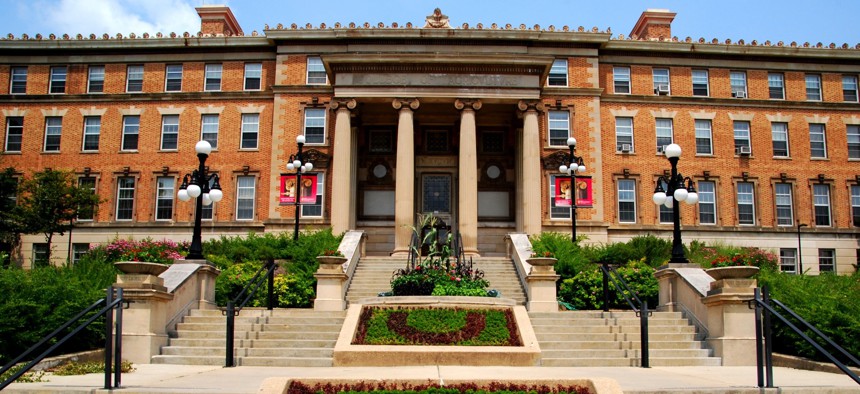As State Spending on Higher Education Drops, Federal Funds Grow

The University of Wisconsin in Madison youngryand / Shutterstock.com
New Pew research shows “a pretty striking change, in a pretty short period of time.”
It marks a dramatic shift. As state spending on higher education has gone down in recent years, the level of federal funding has grown, according to new research The Pew Charitable Trusts released on Thursday.
Federal dollars spent on the equivalent of each full-time student attending public, nonprofit and for-profit colleges and universities in the U.S. exceeded state funding levels between 2010 and 2012, the Pew researchers found. This had not been the case in the prior two decades.
While state spending per student dropped by about 37 percent, from $6,968 to around $4,364 between 2000 and 2012, the amount of federal dollars spent went up by 32 percent, from $3,878 to $5,127. The figures were adjusted for inflation and enrollment.
“This is a pretty striking change, in a pretty short period of time,” Phillip Oliff, a manager with Pew's fiscal federalism initiative, told reporters during a conference call on Thursday.
Although the overall amount of cash that states and the federal government spent on higher education was comparable in size during 2013, the most recent year the research examined, funds from the two sources went to pay for very different types of programs and expenses.
States spent $72.7 billion on higher education in the 2013 academic year, while the federal government invested a total of $75.6 billion, according to Pew.
Of the federal funds, $31.3 billion went to need-based Pell Grants, $24.6 billion to research grants and $12.2 to veterans programs. Between 2008 and 2013 Pell Grants and spending on veterans’ educational benefits increased significantly. Pell Grants rose by $13.2 billion, or 72 percent, and spending on veterans programs went up by $8.4 billion, or 225 percent.
Nearly three-quarters of the state money spent on higher education in 2013—about $53 billion—helped pay for general operating expenses of public colleges and universities.
This helps explain why reductions in state funding levels frequently trigger concerns among public colleges and universities.
“When states make dramatic cutbacks in funding for public higher education, regional public colleges and universities often get the brunt of the cuts,” said Thomas Harnisch, director of state relations and policy analysis for the American Association of State Colleges and Universities.
The most recent round of legislative sessions in states around the U.S. has been generally favorable in terms of providing modest increases in higher education funding, with notable exceptions in Wisconsin and Louisiana, according to Harnisch.
A legislative committee recently voted to ax $250 million from the University of Wisconsin’s budget. And funding for public universities was one of the issues in play as the Louisiana state legislature worked through the final day of its session on Thursday.
But even in states where higher education funding levels have gone up, the gains have not erased the imprint left by the Great Recession.
“The budget increases that have happened in the post recession have not made up for the deep cuts that happened during the recession,” Harnisch said. “We’re still far, far away from that.”
A report released in mid-May by the Center on Budget and Policy Priorities, found that 47 states were spending less per student in the 2014-2015 school year than they were pre-recession. Alaska, North Dakota, and Wyoming, were the exceptions.
“It’s still a difficult environment for public colleges and universities without a doubt,” Harnisch said. “We’re still living in an era of scarcity.”
(Photo by youngryand / Shutterstock.com)
NEXT STORY: The connected city: Don’t forget to tell the citizen






